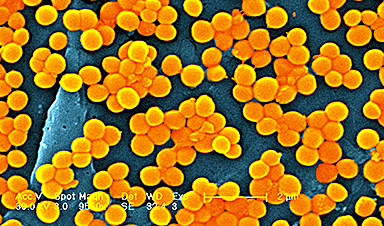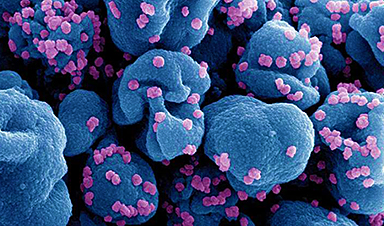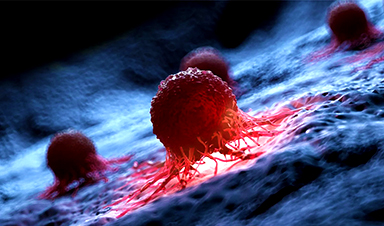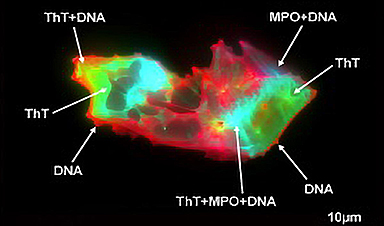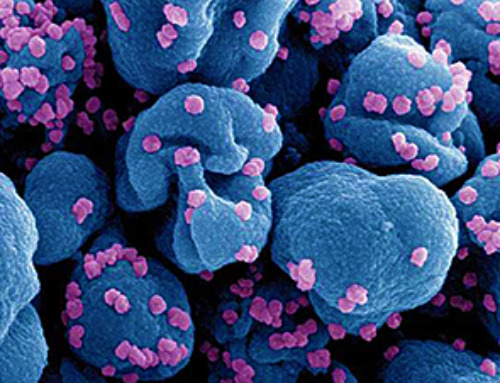The number of lives lost around the world due to infections that are resistant to the medications intended to treat them could increase nearly 70% by 2050, a new study projects, further showing the burden of theongoing superbug crisis.
Antimicrobial resistance happens when pathogens like bacteria and fungi develop the ability to evade the medications used to kill them.
The World Health Organization has called AMR "one of the top global public health and development threats," driven by the misuse and overuse of antimicrobial medications in humans, animals and plants, which can help pathogens develop a resistance to them.
The new study reveals that when it comes to the prevalence of AMR and its effects, "we expect it to get worse," said lead author Dr. Chris Murray, director of the Institute for Health Metrics and Evaluation at the University of Washington.
"We need appropriate attention on new antibiotics and antibiotic stewardship so that we can address what is really quite a large problem," he said.
Older adults bear the burden
The researchers – from the Global Research on Antimicrobial Resistance Project, the Institute for Health Metrics and Evaluation and other institutions – estimated deaths and illnesses attributable to versus associated with antimicrobial resistance for 22 pathogens, 84 pathogen-drug combinations and 11 infections across 204 countries and territories from 1990 through 2021. A death attributable to antimicrobial resistance was directly caused by it, while a death associated with AMR may have another cause that was exacerbated by the antimicrobial resistance.
About 520 million individual records were part of the data to make those estimates.
The researchers found that from 1990 to 2021, deaths from AMR fell more than 50% among children younger than 5 but increased more than 80% among adults 70 and older – trends that are forecast to continue.
It was surprising to see those patterns emerge, Murray said.
"We had these two opposite trends going on: a decline in AMR deaths under age 15, mostly due to vaccination, water and sanitation programs, some treatment programs, and the success of those," Murray said.
"And at the same time, there's this steady increase in the number of deaths over age 50," he said, as the world ages; older adults can be more susceptible to severe infection.
The researchers found that the pathogen-drug combination that had the largest increase in causing the most burden among all age groups was methicillin-resistant Staphylococcus aureus, or MRSA. For this combination – the antibiotic methicillin and the bacteria S. aureus – the number of attributable deaths nearly doubled from 57,200 in 1990 to 130,000 in 2021.
Using statistical modeling, the researchers also produced estimates of deaths and illnesses attributable to AMR by 2050 in three scenarios: if the current climate continues, if new potent antibiotic drugs are developed to target resistant pathogens, and if the world has improved quality of health care for infections and better access to antibiotics.
The forecasts show that deaths from antimicrobial resistance will increase by 2050 if measures are not in place to improve access to quality care, powerful antibiotics and other resources to reduce and treat infections.
The researchers estimated that, in 2050, the number of global deaths attributable to antimicrobial resistance could reach 1.9 million, and those associated with antimicrobial resistance could reach 8.2 million.
According to the data, the regions of the world most affected by AMR and attributable deaths are South Asia, Latin America and the Caribbean, and sub-Saharan Africa – and many of these regions don't have equitable access to quality care, Murray said.
"There are still, unfortunately, a lot of places in low-resource settings where people who need antibiotics are just not getting them, and so that's a big part of it. But it's not just the antibiotics. It's when you're sick, either as a kid or an adult, and you get sent to hospital, and you get a package of care, essentially, that includes things like oxygen," Murray said.
"In low-resource settings, even basics like oxygen are often not available. And then, if you are very sick and you need an intensive care unit, well, there's big parts of the low-resource world – most of them, actually – where you wouldn't get access to that sort of care," he said. "So there's a spectrum of supportive care, plus the antibiotics, that really make a difference."
But in a scenario where the world has better health care, 92 million cumulative deaths could be averted between 2025 and 2050, the researchers forecast. And in a scenario where the world has new, more potent drugs, about 11 million cumulative deaths could be avoided.
'There is possible hope on the horizon'
The "innovative and collaborative" approach to this study provides a "comprehensive assessment" of antimicrobial resistance and its potential burden on the world, Samuel Kariuki, of the Kenya Medical Research Institute, wrote in a commentary that accompanied the new study in The Lancet.
Yet he warned that the forecast models do not consider the emergence of new superbugs "and might lead to underestimation if new pathogens arise."
Overall, "these data should drive investments and targeted action" toward addressing the growing challenge of antimicrobial resistance in all regions of the world, Kariuki wrote.
The new paper represents decades of research on the global burden of antimicrobial resistance, said Dr. Steffanie Strathdee, associate dean of global health sciences and distinguished professor at the University of California San Diego School of Medicine, who was not involved in the study.
Strathdee saw firsthand the effects that antimicrobial resistance can have on health when her husband nearly died from a superbug infection.
"I'm somebody who's lived with antimicrobial resistance affecting my family for the last eight years. My husband nearly died from a superbug infection. It's actually one of the infections that's highlighted in this paper," said Strathdee, who serves as co-director of the Center for Innovative Phage Applications and Therapeutics at UC San Diego.
During a Thanksgiving cruise on the Nile in 2015, Strathdee's husband, Tom Patterson, suddenly developed severe stomach cramps. When a clinic in Egypt failed to help his worsening symptoms, Patterson was flown to Germany, where doctors discovered a grapefruit-size abdominal abscess filled with Acinetobacter baumannii, a virulent bacterium resistant to nearly all antibiotics.
The annual number of people dying from gram-negative bacteria, like A. baumannii, that are resistant to carbapenem – a class of last-resort antibiotics used to treat severe bacterial infections – rose 89,200 from 1990 to 2021, more than any antibiotic class over that period, according to the new study.
"That's one of the urgent priority pathogens, which is one of these gram-negative bacteria," Strathdee said. "And my husband, when he fell ill from this, he was 69. So he's exactly at the age that this paper is highlighting, that older people are going to be affected by this more in the future, because our population is aging and people have comorbidities, like diabetes, like my husband has."
Strathdee's husband recovered after treatment with phages, viruses that selectively target and kill bacteria and that can be used as a treatment approach for antimicrobial-resistant bacterial infections.
"The most important alternative to antibiotics is phage therapy, or bacteriophage therapy, and that's what saved my husband's life," Strathdee said. "Phage can be used very effectively with antibiotics, to reduce the amount of antibiotics that are needed, and they can even be used potentially in livestock and in farming."
The new study gives Strathdee hope that the world can reduce the potential burden of antimicrobial resistance. That would require improving access to antibiotics and newer antimicrobial medications, vaccines, clean water and other aspects of quality health care around the world, she said, while reducing the use of antibiotics in livestock, food production and the environment, which can breed more resistance.
"There is possible hope on the horizon," Strathdee said. "If we were to scale up these interventions, we could dramatically reduce the number of deaths in the future."
CNN's Sandee LaMotte contributed to this report.
News
Scientists Melt Cancer’s Hidden “Power Hubs” and Stop Tumor Growth
Researchers discovered that in a rare kidney cancer, RNA builds droplet-like hubs that act as growth control centers inside tumor cells. By engineering a molecular switch to dissolve these hubs, they were able to halt cancer [...]
Platelet-inspired nanoparticles could improve treatment of inflammatory diseases
Scientists have developed platelet-inspired nanoparticles that deliver anti-inflammatory drugs directly to brain-computer interface implants, doubling their effectiveness. Scientists have found a way to improve the performance of brain-computer interface (BCI) electrodes by delivering anti-inflammatory drugs directly [...]
After 150 years, a new chapter in cancer therapy is finally beginning
For decades, researchers have been looking for ways to destroy cancer cells in a targeted manner without further weakening the body. But for many patients whose immune system is severely impaired by chemotherapy or radiation, [...]
Older chemical libraries show promise for fighting resistant strains of COVID-19 virus
SARS‑CoV‑2, the virus that causes COVID-19, continues to mutate, with some newer strains becoming less responsive to current antiviral treatments like Paxlovid. Now, University of California San Diego scientists and an international team of [...]
Lower doses of immunotherapy for skin cancer give better results, study suggests
According to a new study, lower doses of approved immunotherapy for malignant melanoma can give better results against tumors, while reducing side effects. This is reported by researchers at Karolinska Institutet in the Journal of the National [...]
Researchers highlight five pathways through which microplastics can harm the brain
Microplastics could be fueling neurodegenerative diseases like Alzheimer's and Parkinson's, with a new study highlighting five ways microplastics can trigger inflammation and damage in the brain. More than 57 million people live with dementia, [...]
Tiny Metal Nanodots Obliterate Cancer Cells While Largely Sparing Healthy Tissue
Scientists have developed tiny metal-oxide particles that push cancer cells past their stress limits while sparing healthy tissue. An international team led by RMIT University has developed tiny particles called nanodots, crafted from a metallic compound, [...]
Gold Nanoclusters Could Supercharge Quantum Computers
Researchers found that gold “super atoms” can behave like the atoms in top-tier quantum systems—only far easier to scale. These tiny clusters can be customized at the molecular level, offering a powerful, tunable foundation [...]
A single shot of HPV vaccine may be enough to fight cervical cancer, study finds
WASHINGTON -- A single HPV vaccination appears just as effective as two doses at preventing the viral infection that causes cervical cancer, researchers reported Wednesday. HPV, or human papillomavirus, is very common and spread [...]
New technique overcomes technological barrier in 3D brain imaging
Scientists at the Swiss Light Source SLS have succeeded in mapping a piece of brain tissue in 3D at unprecedented resolution using X-rays, non-destructively. The breakthrough overcomes a long-standing technological barrier that had limited [...]
Scientists Uncover Hidden Blood Pattern in Long COVID
Researchers found persistent microclot and NET structures in Long COVID blood that may explain long-lasting symptoms. Researchers examining Long COVID have identified a structural connection between circulating microclots and neutrophil extracellular traps (NETs). The [...]
This Cellular Trick Helps Cancer Spread, but Could Also Stop It
Groups of normal cbiells can sense far into their surroundings, helping explain cancer cell migration. Understanding this ability could lead to new ways to limit tumor spread. The tale of the princess and the [...]
New mRNA therapy targets drug-resistant pneumonia
Bacteria that multiply on surfaces are a major headache in health care when they gain a foothold on, for example, implants or in catheters. Researchers at Chalmers University of Technology in Sweden have found [...]
Current Heart Health Guidelines Are Failing To Catch a Deadly Genetic Killer
New research reveals that standard screening misses most people with a common inherited cholesterol disorder. A Mayo Clinic study reports that current genetic screening guidelines overlook most people who have familial hypercholesterolemia, an inherited disorder that [...]
Scientists Identify the Evolutionary “Purpose” of Consciousness
Summary: Researchers at Ruhr University Bochum explore why consciousness evolved and why different species developed it in distinct ways. By comparing humans with birds, they show that complex awareness may arise through different neural architectures yet [...]
Novel mRNA therapy curbs antibiotic-resistant infections in preclinical lung models
Researchers at the Icahn School of Medicine at Mount Sinai and collaborators have reported early success with a novel mRNA-based therapy designed to combat antibiotic-resistant bacteria. The findings, published in Nature Biotechnology, show that in [...]
